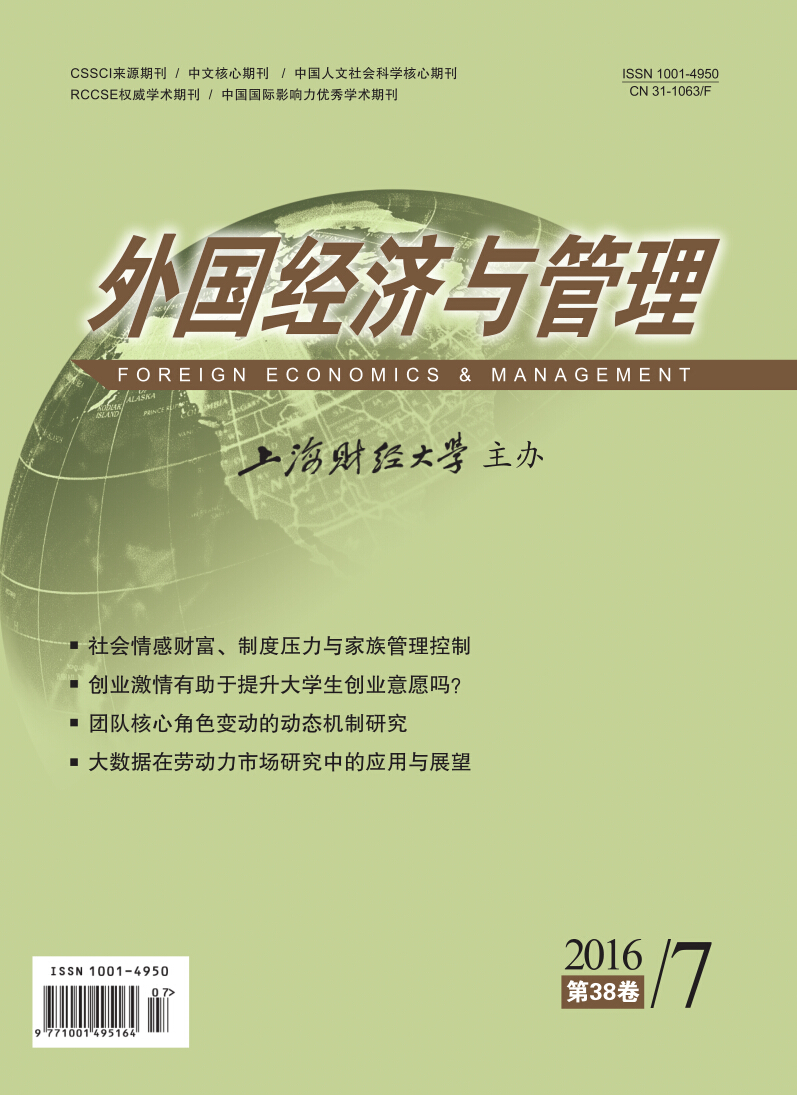组织的生存和发展被认为与其所拥有的人力资本息息相关。然而在组织中,员工的能力和贡献并不是正态分布的,往往存在少数优秀的员工,其工作水平远高于其他员工,他们在组织中像明星一样耀眼,对组织绩效有至关重要甚至决定性的影响,是组织人力资本最重要的组成部分。学术界专门针对这些组织高端人才的研究才刚刚起步,本文对相关文献进行了回顾,分析了明星员工自身的特点和属性,论述了明星员工在组织中的影响作用,探讨了组织对明星员工的管理问题,并对未来研究方向进行了展望。
组织中的明星研究回顾与展望
摘要
参考文献
1 Aguinis H, O'Boyle Jr E. Star performers in twenty-first century organizations[J]. Personnel Psychology, 2014, 67(2):313-50.
2 Azoulay P, Zivin J S G, Wang J J. Superstar extinction[J]. The Quarterly Journal of Economics, 2010, 125(2):549-589.
3 Beck J W, Beatty A S, Sackett P R. On the distribution of job performance:The role of measurement characteristics in observed departures from normality[J]. Personnel Psychology, 2013, 67(3):531-566.
4 Borman W C, Motowidlo S J. Expanding the criterion domain to include elements of contextual performance[A]. Schmitt N, Borman W(Eds.). Personnel selection in organizations[C]. New York: Jossey-Bass, 1993.
5 Bunderson J S. Recognizing and utilizing expertise in work groups:A status characteristics perspective[J]. Administrative Science Quarterly, 2003, 48(4):557-591.
6 Burke M A, Fournier G M, Prasad K. The diffusion of a medical innovation:Is success in the stars? Further evidence[J]. Southern Economic Journal, 2007, 75(4):1274-1278.
7 Buunk B P, Zurriaga P, Peíró J M, et al. Social comparisons at work as related to a cooperative social climate and to individual differences in social comparison orientation[J]. Applied Psychology, 2005, 54(1):61-80.
8 Call M L, Nyberg A J, Thatcher S M B. Stargazing:An integrative conceptual review, theoretical reconciliation, and extension for star employee research[J]. Journal of Applied Psychology, 2015, 100(3):623-640.
9 Cialdini R B, Borden R J, Thorne A, et al. Basking in reflected glory:Three (football) field studies[J]. Journal of Personality and Social Psychology, 1976, 34(3):366-375.
10 Coff R, Kryscynski D. Drilling for micro-foundations of human capital- based competitive advantages[J]. Journal of Management, 2011, 37(5):1429-1443.
11 Dahlin K B, Weingart L R, Hinds P J. Team diversity and information use[J]. Academy of Management Journal, 2005, 48(6):1107-1123.
12 DeShon R P, Kozlowski S W J, Schmidt A M, et al. A multiple-goal, multilevel model of feedback effects on the regulation of individual and team performance[J]. Journal of Applied Psychology, 2004, 89(6):1035-1056.
13 Granovetter M S. The strength of weak ties[J]. American Journal of Sociology, 1973, 78(6):1360-1380.
14 Grigorious K, Rothaermel F T. Structural microfoundations of innovation:The role of relational stars[J]. Journal of Management, 2014, 40(2):586-615.
15 Groysberg B, Lee L E. Hiring stars and their colleagues:Exploration and exploitation in professional service firms[J]. Organization Science, 2009, 20(4):740-758.
16 Groysberg B, Lee L E, Nanda A. Can they take it with them? The portability of star knowledge workers' performance[J]. Management Science, 2008, 54(7):1213-1230.
17 Groysberg B, Polzer J T, Elfenbein H A. Too many cooks spoil the broth:How high-status individuals decrease group effectiveness[J]. Organization Science, 2011, 22(3):722-737.
18 Kelly R, Caplan J. How Bell Labs creates star performers[J]. Harvard Business Review, 1993, 71(4):128-139.
19 Kim E, Glomb T M. Victimization of high performers:The roles of envy and work group identification[J]. Journal of Applied Psychology, 2014, 99(4):619-634.
20 Lam C K, Van der Vegt G S, Walter F, et al. Harming high performers:A social comparison perspective on interpersonal harming in work teams[J]. Journal of Applied Psychology, 2011, 96(3):588-601.
21 Lockwood P, Kunda Z. Superstars and me:Predicting the impact of role models on the self[J]. Journal of Personality and Social Psychology, 1997, 73(1):91-103.
22 Maltarich M A, Nyberg A J, Reilly G. A conceptual and empirical analysis of the cognitive ability-voluntary turnover relationship[J]. Journal of Applied Psychology, 2010, 95(6):1058-1070.
23 Merton R K. Social theory and social structure[M]. New York, NY:Free Press, 1968.
24 Nyberg A. Retaining your high performers:Moderators of the performance-job satisfaction-voluntary turnover relationship[J]. Journal of Applied Psychology, 2010, 95(3):440-453.
25 O'Boyle Jr E, Aguinis H. The best and the rest:Revisiting the norm of normality of individual performance[J]. Personnel Psychology, 2012, 65(1):79-119.
26 Oettl A. Reconceptualizing stars:Scientist helpfulness and peer performance[J]. Management Science, 2012, 58(6):1122-1140.
27 Oldham G R, Cummings A. Employee creativity:Personal and contextual factors at work[J]. Academy of Management Journal, 1996, 39(3):607-634.
28 Oldroyd J R, Morris S S. Catching falling stars:A human resource response to social capital's detrimental effect of information overload on star employees[J]. Academy of Management Review, 2012, 37(3):396-418.
29 Overbeck J R, Correll J, Park B. Internal status sorting in groups:The problem of too many stars[J]. Research on Managing Groups and Teams, 2005, 7:171-202.
30 Pfeffer J. Fighting the war for talent is hazardous to your organization's health[J]. Organizational Dynamics, 2001, 29(4):248-259.
31 Tierney P, Farmer S M. The Pygmalion process and employee creativity[J]. Journal of Management, 2004, 30(3):413-432.
32 Tushman M L. Special boundary roles in the innovation process[J]. Administrative Science Quarterly, 1977, 22(4):587-605.
引用本文
沙开庆, 杨忠. 组织中的明星研究回顾与展望[J]. 外国经济与管理, 2016, 38(7): 86–95.
导出参考文献,格式为:





 5748
5748  6173
6173

